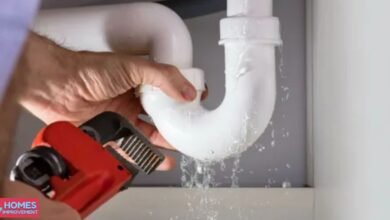Is It Necessary to Upgrade Your Toilet to a Smart One?

In recent years, the rise of smart home technology has extended its reach into the bathroom, with smart toilets becoming an increasingly popular option for homeowners. These high – tech fixtures come with a plethora of features, from automated functions to advanced hygiene systems. However, the question remains: is it truly necessary to upgrade your traditional toilet to a smart one? This blog post will explore the various aspects of smart toilets, weighing the benefits against the potential drawbacks, to help you make an informed decision.
The Allure of Smart Toilets: A Technological Marvel
Advanced Hygiene Features
One of the most compelling reasons people consider upgrading to a smart toilet is the enhanced hygiene it offers. Traditional toilets require users to manually handle toilet paper, which can lead to the spread of germs. Smart toilets, on the other hand, often come equipped with bidet functions. These bidets use a stream of water for cleaning, providing a more thorough and hygienic experience compared to relying solely on toilet paper. Some models even offer adjustable water pressure, temperature, and nozzle positions, allowing users to customize their cleaning experience according to their preferences.
Moreover, many smart toilets feature self – cleaning nozzles. Before and after each use, the nozzles are automatically cleaned, reducing the risk of bacterial contamination. Additionally, some smart toilets incorporate ultraviolet (UV) sterilization or electrolyzed water systems to further eliminate germs on the toilet bowl and seat, creating a more sanitary bathroom environment. This is especially beneficial for households with children, the elderly, or individuals with weakened immune systems.
Convenience and Comfort
Smart toilets are designed with convenience and comfort in mind. Automatic lid – opening and closing mechanisms are a common feature. Using sensors, the toilet lid opens as you approach and closes when you leave, eliminating the need to touch the lid—a significant advantage from a hygiene perspective. Some models also offer automatic flushing, which activates once the user has finished using the toilet, ensuring a hands – free experience.
Heated seats are another popular feature, particularly in colder climates. Smart toilets allow you to adjust the seat temperature to your liking, providing a warm and cozy seating experience during the winter months. After using the bidet function, many smart toilets also include a drying feature, eliminating the need for toilet paper and leaving you feeling dry and comfortable.
Customization and Personalization
With smart toilets, users have the ability to customize their experience. Through remote controls or smartphone apps, you can easily adjust various settings such as water pressure, temperature, seat heating, and even the type of cleaning mode (e.g., posterior cleaning, feminine cleaning). Some high – end models also offer pre – set user profiles, allowing multiple family members to save their preferred settings, ensuring a personalized experience for everyone in the household.
The Practical Considerations: Are Smart Toilets Feasible?
Cost
One of the primary factors that may deter people from upgrading to a smart toilet is the cost. Smart toilets are generally more expensive than traditional toilets. The price can range from a few hundred dollars for basic models to several thousand dollars for high – end, feature – rich versions. In addition to the initial purchase price, there are also potential installation costs. Since smart toilets often require an electrical connection, hiring a professional electrician to install the necessary wiring can add to the overall expense.
Furthermore, smart toilets may have higher long – term maintenance costs. Components such as the bidet nozzles, heating elements, and sensors may need to be replaced over time, and these replacement parts can be costly. There is also the potential for technical issues that may require professional repair, which can further increase the cost of ownership.
Compatibility and Installation

Installing a smart toilet is not as straightforward as replacing a traditional toilet. Smart toilets often have specific requirements regarding plumbing, electrical outlets, and water supply. For example, some models may require a dedicated electrical circuit, and the water pressure in your home needs to be within a certain range for the bidet and flushing functions to work properly. If your existing bathroom infrastructure does not meet these requirements, significant modifications may be needed, which can be time – consuming and expensive.
Moreover, not all smart toilets are compatible with every type of bathroom layout or plumbing system. It’s essential to carefully research and ensure that the smart toilet you choose will fit your bathroom and work with your existing plumbing before making a purchase.
Technical Glitches and Reliability
As with any technological device, smart toilets are prone to technical glitches. Sensors may malfunction, causing the lid not to open or close correctly, or the bidet may stop working. Software issues in models connected to smartphone apps can also lead to problems with setting adjustments. While many manufacturers offer warranties and customer support, dealing with these technical issues can be frustrating and time – consuming, especially if you rely on the toilet for daily use.
In addition, the complexity of smart toilets means that they may be less reliable than traditional toilets over the long term. With more components and systems, there are more opportunities for something to go wrong, and repairs can be more complicated and costly compared to fixing a simple traditional toilet.
Environmental Impact: A Double – Edged Sword
Water Conservation
Smart toilets can contribute to water conservation in several ways. Many models are designed with efficient flushing systems that use less water per flush compared to older traditional toilets. Some smart toilets also offer dual – flush options, allowing users to choose between a partial flush for liquid waste and a full flush for solid waste, further reducing water consumption.
However, the bidet function of smart toilets does use additional water. While the amount of water used by bidets is relatively small compared to a full shower or bath, it still adds to the overall water usage in the household. Whether a smart toilet is truly more water – efficient than a traditional toilet depends on how frequently the bidet function is used and the efficiency of the flushing system.
Energy Consumption
Smart toilets require electricity to operate their various features, such as heated seats, automatic lids, and bidet functions. This means that they contribute to your household’s energy consumption. Although the energy consumption of individual smart toilet features may not be extremely high, over time, the cumulative energy use can add up, especially if multiple family members use the toilet regularly.
On the other hand, some smart toilets are designed with energy – saving features. For example, they may enter a low – power standby mode when not in use for an extended period, reducing energy consumption. But it’s important to consider the overall energy impact when deciding whether to upgrade to a smart toilet.
Lifestyle and User Preferences: The Role of Personal Needs
Family Dynamics
For families with young children or elderly members, a smart toilet can offer significant benefits. The bidet function can be especially helpful for children who may not be able to clean themselves thoroughly with toilet paper. The automatic features, such as the lid opening and closing and flushing, can also make using the toilet easier for the elderly or those with limited mobility, reducing the risk of slips and falls associated with manual toilet operation.
However, if your family members are not comfortable with technology or are resistant to change, the complex features of a smart toilet may cause frustration rather than convenience. In such cases, the cost and effort of upgrading may not be worth the limited use the smart toilet will receive.
Personal Hygiene Preferences
Individuals who place a high priority on personal hygiene may find the advanced cleaning features of smart toilets to be a game – changer. The bidet function provides a more thorough clean compared to toilet paper, and the self – cleaning and sterilization features ensure a hygienic environment. If you’re someone who values a more luxurious and clean bathroom experience, upgrading to a smart toilet can enhance your daily routine.
Conversely, if you’re satisfied with the traditional method of using toilet paper and don’t feel the need for additional cleaning features, a smart toilet may seem like an unnecessary expense.
Conclusion
Upgrading to a smart toilet isn’t just about embracing modern technology—it’s about enhancing your daily comfort, improving hygiene, and adding a touch of luxury to your home. While it’s not strictly “necessary” for everyone, the convenience, customization, and advanced features of smart toilets make them an attractive option for many households.
If you’re considering making the switch, Giving Tree Home is a fantastic place to begin your journey. With an extensive selection of smart toilets in a variety of styles, colors, and functionalities, Giving Tree Home makes it easy to find the perfect match for your bathroom and lifestyle. Whether you’re seeking minimalist elegance or feature-packed innovation, their lineup has something for everyone. Quality, style, and cutting-edge technology—all in one place.
If you need more information, click on this link.





